What Causes Mould on Walls?
Mould creeping up your walls is not just an eyesore; it’s a sign of an underlying issue.
Understanding what causes mould on walls, the different types you might encounter, the potential problems it can bring, and effective ways to tackle and prevent it is key to maintaining a healthy home.
In this article, we’ll delve into wall mould, offering insights and practical tips for a mould-free living space.
Article Chapters
What Causes Mould on Walls?
Mould on walls has several causes, with most relating to moisture. The most common causes are:
Excess Moisture and Poor Ventilation
The primary trigger for mould on walls is excess moisture, often exacerbated by poor ventilation.
When indoor spaces lack adequate airflow, moisture accumulates, providing an ideal breeding ground for mould spores.
This is particularly prevalent in areas with inadequate ventilation systems or a lack of windows.
Water Leaks
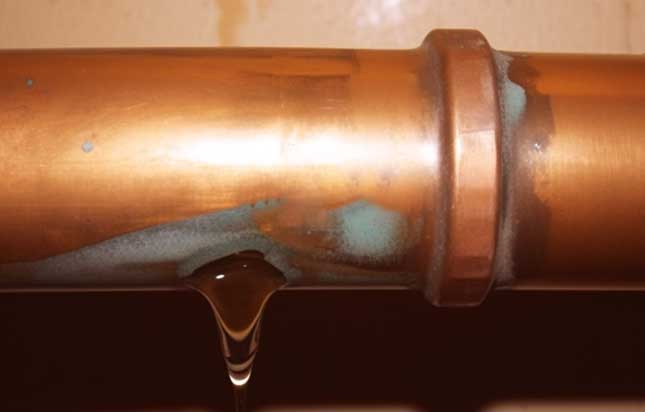
Leaky pipes can cause mould on walls
Water leaks from plumbing or external sources can introduce moisture into wall materials.
Undetected leaks behind walls or in ceilings create hidden reservoirs of dampness, nurturing mould growth.
Identifying and addressing these leaks promptly is crucial to preventing persistent mould issues.
High Humidity Levels
Regions with consistently high humidity levels contribute to the development of mould on walls.
Bathrooms, kitchens, and basements, where moisture is naturally higher, are susceptible areas.
In such environments, controlling humidity becomes paramount to mould prevention.
Condensation in Cold Spaces
In colder climates, condensation on walls is a common trigger for mould.
When warm indoor air meets cooler surfaces, such as exterior walls or windows, condensation occurs.
Over time, this moisture buildup encourages mould formation, particularly in corners and behind furniture.
Building Materials and Construction Issues
The type of building materials used can influence mould growth.
Porous materials, like drywall or wood, readily absorb and retain moisture, fostering mould development.
Construction issues, such as improper sealing or inadequate insulation, contribute to the vulnerability of walls to mould infestations.
What are the Different Types of Mould on Walls?
Mould comes in various forms, each with its unique characteristics and colours. The most common types found on walls include:
Cladosporium
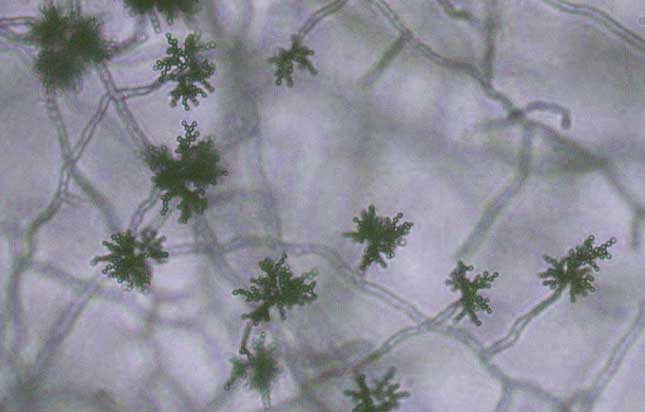
Source: Wikipedia
Cladosporium is a widespread mould type found both indoors and outdoors.
While it typically presents as black or green patches on walls, it is generally considered less harmful to humans than other mould varieties.
Penicillium
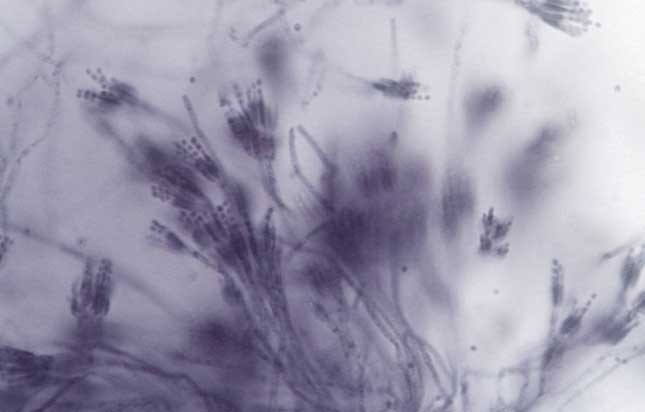
Source: Wikipedia
Penicillium mould is frequently discovered in indoor environments, particularly on water-damaged materials.
Recognised by its bluish-green appearance, it can adversely affect indoor air quality, potentially triggering respiratory issues.
Aspergillus
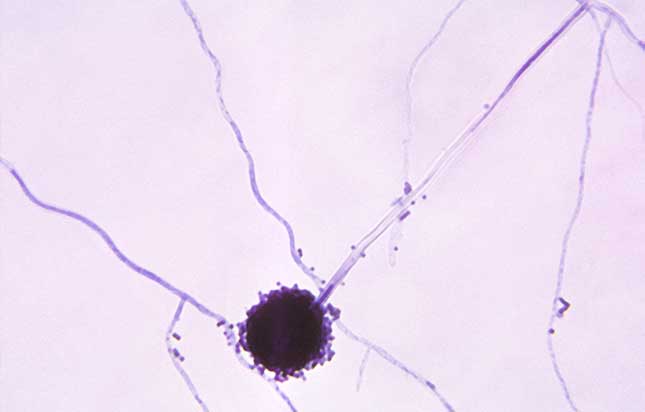
Source: Wikipedia
Aspergillus is a diverse genus with numerous species, often appearing in yellow, green, or black hues.
While some forms of Aspergillus are harmless, others can produce mycotoxins, posing health risks when inhaled.
Stachybotrys Chartarum (Black Mould)
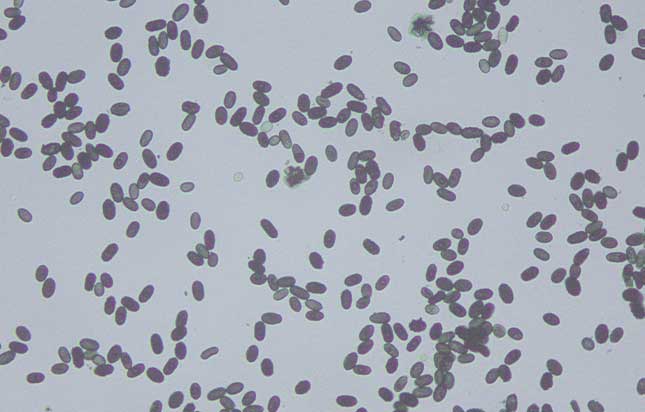
Source: Wikipedia
Commonly known as black mould, Stachybotrys Chartarum is infamous for its dark greenish-black appearance.
It thrives in areas with prolonged water damage and releases mycotoxins that can be harmful to human health, causing respiratory issues.
How to Identify Mould on Walls?
Identifying mould on walls involves a keen observation of visual cues, odours, and potential health symptoms.
Visually, mould manifests as discoloured patches, often green, black, or brown, and may appear fuzzy or slimy.
Musty, earthy smells can signal hidden mould, especially in areas with poor ventilation or water damage.
Respiratory issues like sneezing, coughing, or nasal congestion in occupants may also indicate the presence of mould.
Regularly inspect areas prone to dampness, such as basements, bathrooms, or kitchens.
Check for water stains, peeling paint, or warped surfaces, as these could signify underlying mould growth.
If you notice any musty smells or visible signs of mould, investigate the source of moisture and address it promptly to prevent further spread.
In cases of uncertainty or persistent issues, consider professional mould testing.
These tests can identify the type and concentration of mould spores, providing valuable information for targeted remediation efforts.
Identifying mould early is crucial to prevent potential health hazards and structural damage, ensuring a safe and mould-free living environment.
What Issues Can Mould on Walls Cause?
Mould on walls isn’t just a cosmetic concern.
It can pose several risks:
Health Risks

Mould on walls can be a major health risk
Mould on walls poses significant health risks, particularly to individuals with allergies or respiratory conditions.
Inhalation of mould spores can trigger allergic reactions, respiratory issues, or exacerbate existing conditions like asthma.
Structural Damage
Beyond health concerns, mould can wreak havoc on the structural integrity of a building.
It feeds on organic materials like wood or drywall, leading to decay, warping, and potential compromise of the building’s framework.
Unpleasant Odours
The presence of mould often brings with it musty, unpleasant odours that permeate indoor spaces.
These smells can be persistent and challenging to eliminate, affecting the overall comfort and livability of a home.
Aesthetical Impact
Mould leaves unsightly stains and discoloration on walls, ceilings, and other surfaces.
This visual disruption can be challenging to remove and diminishes the overall aesthetic appeal of the living space.
Reduced Property Value
The discovery of mould can significantly impact a property’s resale value.
Prospective buyers are wary of potential health hazards and the costs associated with mould remediation, potentially leading to decreased property value.
Legal and Insurance Implications
Mould issues may have legal and insurance ramifications.
Homeowners may face liability if mould-related health issues are discovered, and insurance coverage may be affected, especially if the presence of mould was not disclosed.
Why does Mould on Walls Keep Returning?
Mould’s persistent return is often rooted in the failure to address underlying moisture issues.
If the source of excess moisture, such as leaks or inadequate ventilation, remains unresolved, mould will continue to thrive.
Incomplete removal during the remediation process can also contribute to its resurgence, as even small remnants can regenerate.
Inadequate drying during remediation is another common culprit.
If affected materials are not thoroughly dried, residual moisture provides a breeding ground for mould spores.
Moreover, using non-mold-resistant materials in areas prone to moisture exacerbates the problem, as these materials are more susceptible to mould growth.
Addressing recurrent mould requires a comprehensive approach.
Identify and rectify the source of moisture, ensure thorough mould removal, and consider preventive measures like improved ventilation and mould-resistant materials.
By taking these steps, homeowners can break the cycle of mould recurrence and create a healthier, mould-free living space.
How to Remove Mould on Walls?
Effective mould removal involves more than just scrubbing visible patches.
It requires following several steps to stay safe and ensure its full removal:
Identify and Address the Source of Moisture
Before diving into removal, identify and rectify the source of moisture that led to mould growth.
Whether it’s a leak, inadequate ventilation, or condensation, addressing the root cause is essential for effective and long-lasting mould removal.
Safety Precautions
Before starting the removal process, prioritise safety.
Wear protective gear, including gloves, goggles, and a mask, to avoid direct contact with mould spores and minimise inhalation.
Adequate ventilation in the affected area is also crucial.
Isolation of the Affected Area
Isolate the mould-affected area to prevent spores from dispersing to other parts of the home.
Seal off vents, doorways, and windows with plastic sheeting and tape to contain the mould during removal.
Dry Brushing or Vacuuming
Use a dry brush or vacuum with a HEPA filter to remove loose mould from surfaces.
This initial step helps minimise the number of airborne spores during the wet cleaning process.
Wet Cleaning with Mould-Killing Solutions
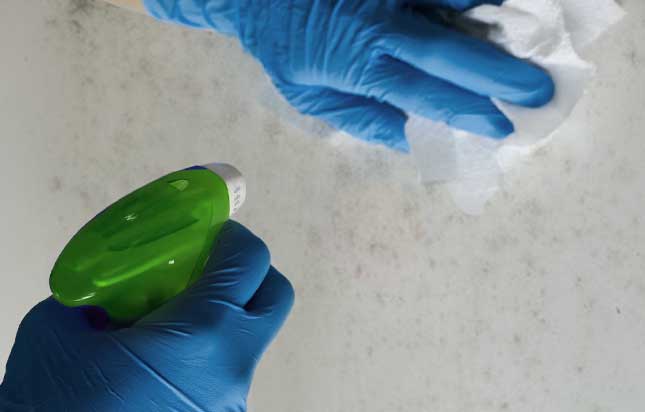
Mould killer removes mould on walls
For hard surfaces, utilise mould-killing solutions such as white vinegar, hydrogen peroxide, or commercial mould removers.
Apply the solution and scrub the affected areas thoroughly. Ensure complete coverage and follow the product’s instructions.
Deep Cleaning for Porous Materials
Porous materials like drywall may require more intensive cleaning.
Consider using a mould-killing primer or, in severe cases, consult with professionals for effective removal and replacement of affected materials.
Ensure Thorough Drying
After cleaning, ensure the treated area is thoroughly dried.
Proper ventilation, dehumidifiers, and fans aid in expediting the drying process.
Adequate drying is critical to prevent mould regrowth.
Regular Monitoring
Regularly monitor the treated area for any signs of mould recurrence.
If the moisture issue persists, mould is likely to return.
Reevaluate the source of moisture and take corrective measures promptly.
Professional Assistance
In situations of extensive mould infestations or when dealing with large areas, seeking professional assistance is advisable.
Professional mould remediation services have the expertise and equipment to handle complex cases effectively.
If you have a mould issue, get in touch with us at KD Pumps.
How to Prevent Mould on Walls?
Preventing mould involves vigilant maintenance and moisture control.
Here are several ways you can help to prevent mould:
Control Indoor Humidity Levels
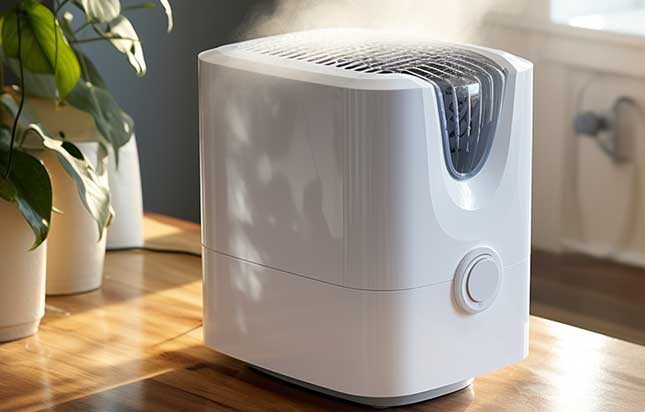
Dehumidifiers help prevent mould on walls
The key to preventing mould on walls is controlling indoor humidity levels.
Keep humidity below 60%, utilising dehumidifiers in areas prone to dampness, such as basements and bathrooms.
Improve Ventilation
Proper ventilation is crucial for moisture control.
Ensure adequate ventilation in bathrooms, kitchens, and other moisture-prone areas.
Use exhaust fans, open windows, and consider installing ventilation systems where needed.
Address Water Leaks Promptly
Water leaks are a major contributor to mould growth.
Regularly inspect for leaks in roofs, pipes, and appliances.
Swiftly address any identified leaks to prevent water seepage into walls.
Use Mould-Resistant Materials
When renovating or constructing, opt for mould-resistant materials.
These materials, such as moisture-resistant drywall, inhibit mould growth, providing an added layer of protection.
Regularly Clean and Maintain
Regular cleaning and maintenance help prevent mould.
Keep surfaces dry, clean regularly, and pay attention to areas prone to moisture, such as shower curtains, window sills, and air conditioning units.
Promote Sunlight Exposure
Sunlight is a natural mould inhibitor.
Ensure that curtains or blinds are opened during the day to allow sunlight to reach walls and surfaces, creating an environment less conducive to mould growth.
Seal and Insulate
Adequate insulation helps prevent condensation on walls, reducing the likelihood of mould growth.
Seal gaps and cracks in walls, windows, and doors to minimise the entry of moist air.
Monitor and Attend to Issues Promptly
Regularly inspect your home for any signs of water damage, leaks, or condensation.
If issues are identified, address them promptly to prevent the escalation of moisture problems.
Conclusion
Removing mould from your walls isn’t just about aesthetics; it’s about creating a healthy living environment.
By understanding the causes, types, and consequences of mould growth, and by adopting proactive measures for removal and prevention, you can ensure that your walls remain a source of comfort rather than concern.
Take charge, keep your home mould-free, and enjoy a healthier, happier living space.
If you are struggling with mould on walls in your home, please do get in touch with us here at KD Pumps.


Comments are closed.